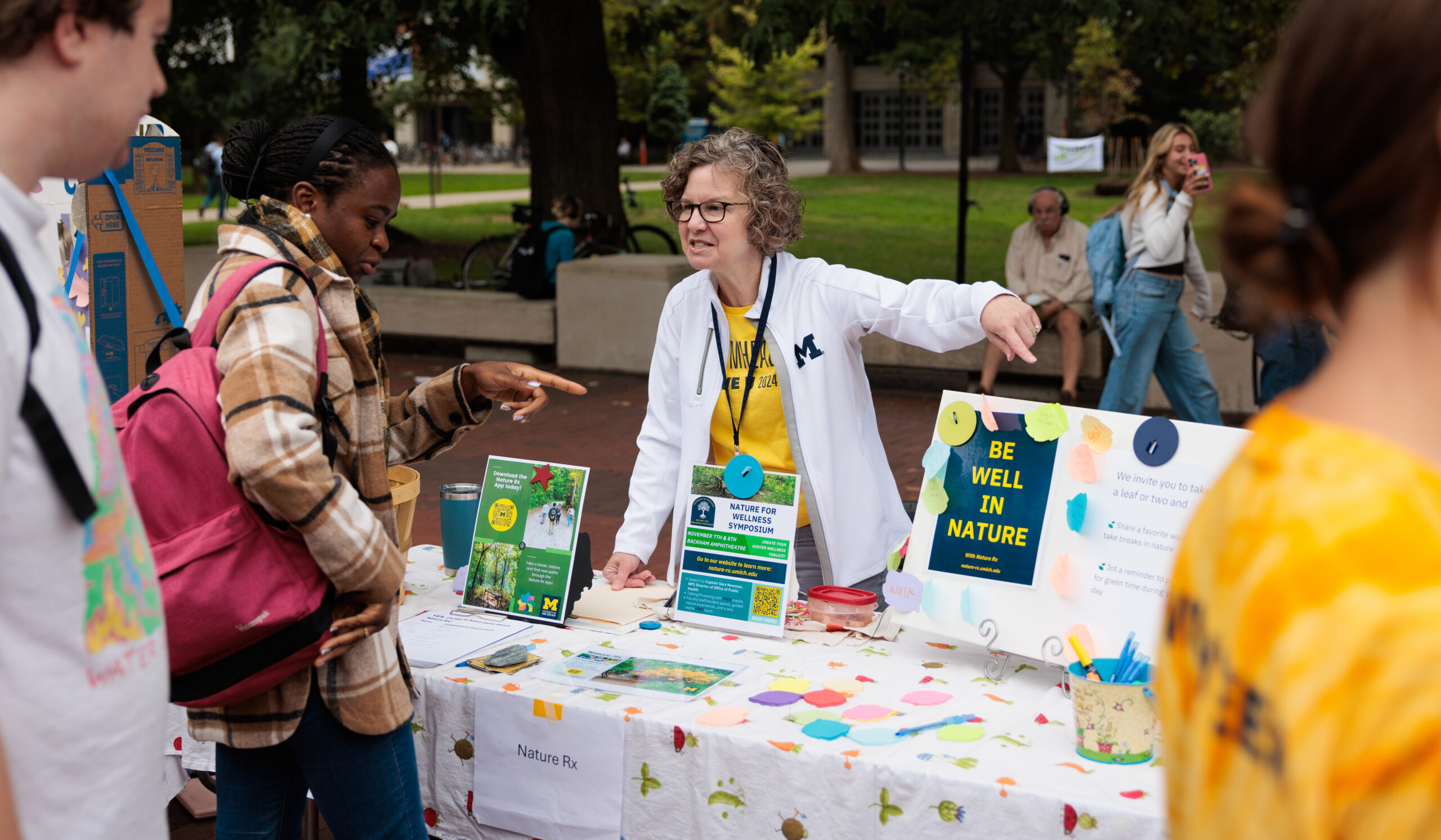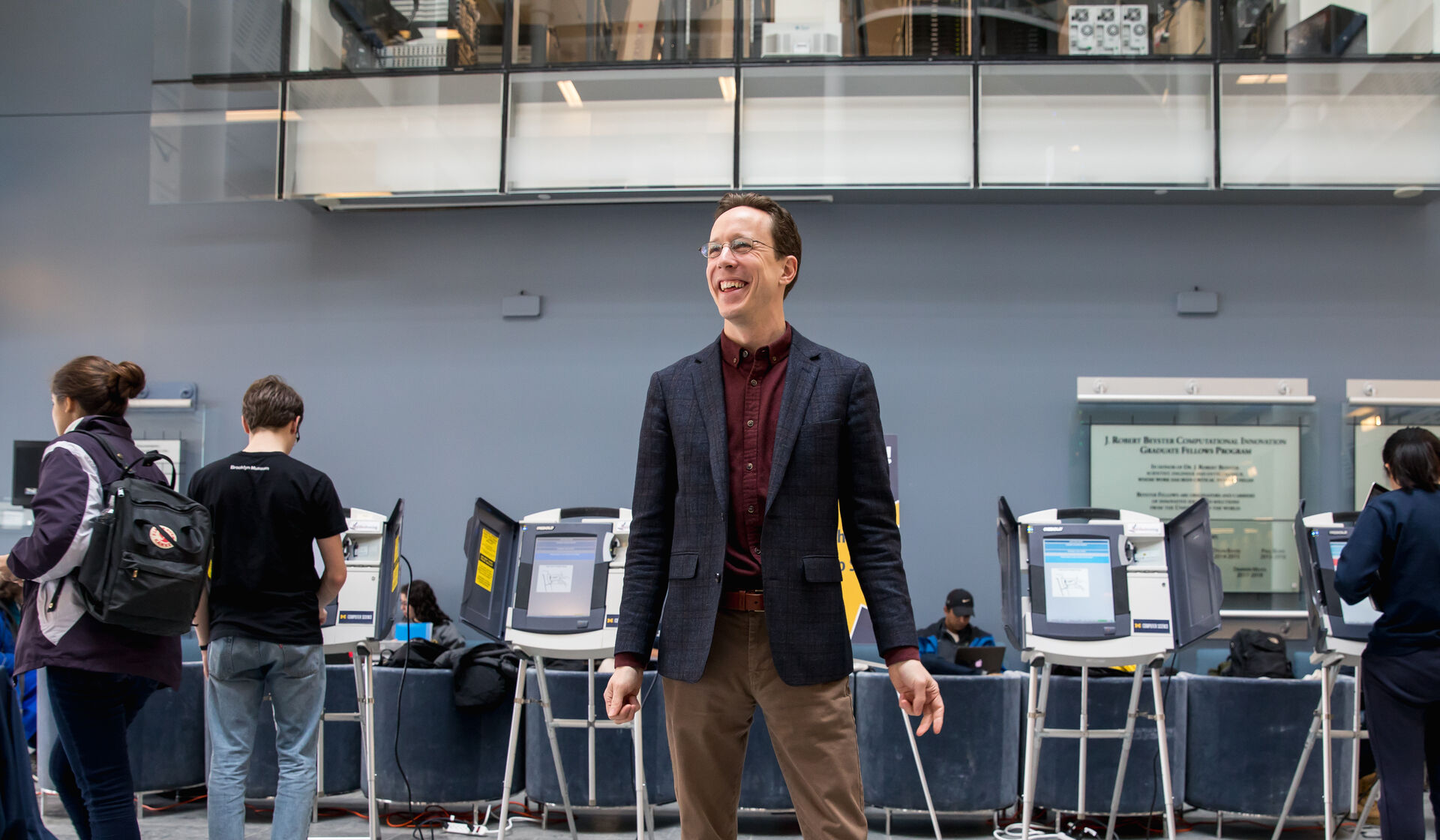The Big Ten’s Bigger Carbon Footprint
•
Illustration by Gwen Keraval
According to a recent study by two graduate students at the School for Environment and Sustainability (SEAS), the 2024 expansion of the Big Ten Conference will more than double travel-related carbon emissions for the University of Michigan football team’s average conference game.
The study, co-authored by current graduate students Paige Greenberg and Molly Russell on behalf of the Center for Sustainable Systems (CSS), analyzed data from both conference and non-conference games.
Greenberg and Russell’s major findings saw that as a direct result of conference expansions, U-M’s travel emissions would increase by a factor of 2.3, while emissions for U-M opponents would increase by a factor of 2.6.
The Big Ten’s expansion added four former Pac-12 Conference schools from the West Coast onto U-M’s athletic schedule for all 29 conference sports at the University, not just football.
Greenberg and Russell say the inspiration for the study came from their supervisor at the CSS, associate director Shoshannah Lenski, MS’11, who brought them the idea after reading about travel emissions associated with the Summer Olympics.
“That got us thinking [about] teams now flying across the country for regular season games. What does that mean for U-M’s climate goals?” Russell says. “We’re both students in the School for Environment and Sustainability. We love football. Given U-M’s strong sustainability commitments, we wanted to explore how increased travel emissions align with those goals.”
Greenberg and Russell also drew from work by researchers at Arizona State University (ASU) who found that emissions would increase as a result of conference expansions.
“We wanted to build off of that and look at U-M specifically,” Greenberg says — and, because the ASU researchers had focused only on conference games, Greenberg and Russell deliberately chose to include non-conference games in their study.
“This is actually the part of the study that shocked us the most: that the non-conference games can play a really big role in the overall season emissions,” Greenberg says.
“Hopefully, we’re positioning U-M to lead by example in addressing those challenges, by integrating those athletic travel emissions into sustainability efforts. Trying to set that standard for other institutions would be pretty important.”
In 2016, for example, teams from the University of Hawai’i at Mānoa, University of Colorado Boulder, and University of Central Florida all traveled significant distances to play U-M in the Big House.
“For those three teams to travel here and play us accounted for over 60 percent of the combined season emissions,” Greenberg says.
“That’s something that we weren’t expecting going into it, because this was a study about the conference expansion . . . and we actually found that in some years, the non-conference game[s] played a huge role in the emissions,” she adds.
Greenberg and Russell say there was another finding they were surprised to encounter in their research.
“It’s really rare that Michigan will travel for a non-conference game. Typically, all of our non-conference games are played here at the Big House. People want to come here. They want to play us in the largest college football stadium in the U.S.,” Greenberg says.
That gets to the point of responsibility, Greenberg adds: if it’s an opposing team that’s actually producing emissions, but that team is traveling to the Big House to play U-M at U-M’s request, then surely U-M must bear a certain amount of responsibility for those emissions as well — right?
“It’s something that we think is probably actionable in the future,” Greenberg says.
But to get some of these numbers into perspective, Russell describes Greenberg casually doing a “back-of-the-envelope” calculation in the midst of their research process.
Their research had found that combined emissions from U-M and opposing teams would produce close to 400 tons of carbon dioxide for the 2024 regular season alone.
Greenberg’s scribbles found a vivid equivalent: that’s the same amount of carbon dioxide a small SUV would produce driving around the Earth’s equator more than 33 times.
“Just a good way to put it in perspective,” Russell says.
There’s something else Greenberg and Russell anticipate as a result of conference expansion — but, at least for now, it’s something that lies outside the scope of their own study.
“We expect that [emissions from] fan travel for all of these events will actually dwarf the emissions from the actual football team,” Greenberg says.
As Russell is quick to point out, fan travel can be notoriously difficult to track because details about where fans are coming from and how they’re getting to the stadium are both unclear.
Greenberg and Russell are fans themselves and emphasize their study “isn’t about tearing apart the football program” but rather aims to begin a conversation about sustainability and form a plan to move forward together.
“Something we hear a lot is U-M’s commitment to being the Leaders and Best . . . whether that’s in academics, athletics, sustainability. Hopefully, we’re positioning U-M to lead by example in addressing those challenges, by integrating those athletic travel emissions into sustainability efforts. Trying to set that standard for other institutions would be pretty important,” Russell says.
Natalia Holtzman, MSI’19, is a freelance writer based in Ann Arbor.



